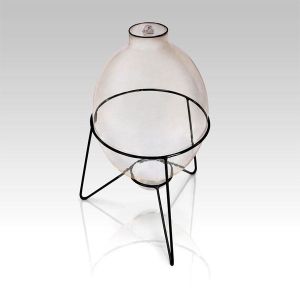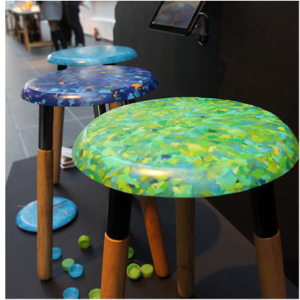It’s no revelation that waste is a ongoing problem that is damaging our environment and in turn our health and well being, yet levels of waste generation are steadily increasing.
Factors such as economic development and rate of urbanization influence the amount of waste produced, with higher income generation correlating to a greater amount of waste produced. Urban residents produce approximately twice the amount of waste as their rural dwellers. By 2025 it is predicted that 4.3 billion urban residents will generate approximately 1.42 kg of waste, per capita, per day (The World Bank Group, 2013). The volume of waste generated per person almost doubled in Australia as it increased from 1,200 kg to 2,100 kg between the period of 2001- 2007 (Australian Bureau of Statistics, 2013). People of high incomes produce 46% of global waste, as opposed to lower income levels which produce 6% (The World Bank Group, 2013).
It is often however these people of lower social economic levels that resort to becoming “waste pickers”, as a way of earning an income to support themselves and their families, that are reducing the environmental impact of waste by collecting, sorting, recycling and selling these materials from municipal dumps and landfills worldwide, performing between 50 and 100 per cent of waste collection in most cities in developing countries, (Dias, S 2012).
An Indonesian “waste picker” family living in Banta Gebang, Indonesia’s largest trash dump (Hodal, K 2011)
One initiative that is using these recycled materials is Ffrash who purchase raw materials from “scavengers and fisherman” who source these materials from various garbage dumps in and around Jakarta. Ffrash is a non-profit organisation started by Dutch designers that seeks to make ‘high quality, sustainable design furniture and home interior products from Indonesian trash’ (Ffrash 2015).
Along with up-cycling these materials to reduce the impact on the environment, the design initiative also provides a secure income for the “waste pickers”. Additionally they train Indonesian street children in becoming skilled furniture makers to produce their designs, providing them with the Vocational training and professional coaching to assist them out of poverty. Beyond the vocational training these youth are taught skills to work in a commercial environment along with social and entrepreneurial skill development training (Ffrash 2015).
The majority of FFrash’s designs are produced from 100% trash and their goal is to use 100% recycled materials where possible. Some of the recycled materials used include plastic bottle lids and recycled timber which are turned into side tables and clocks, as well as discarded light bulbs from fishing boats which are transformed into vases (Ffrash 2015).
Bulb- Table Vase Bottle Cap- Side Table
All revenue is reinvested into the care and development of Ffrash artisans and street children. Praise should be given to initiative such as Ffrash that are not only contributing to reducing waste and addressing environmental issues, but also to their efforts to address social and economic issues.
References:
Australian Bureau of Statistics 2013, Measure of Australia’s Progress, viewed 28/4/15, <http://www.abs.gov.au/ausstats/abs@.nsf/Lookup/by%20Subject/1370 .0~2010~Chapter~Waste%20(6.6) >.
An Indonesian “waste picker” family 2001, photographed by Hodal, K. Guardian, viewed 28/4/15, < http://www.theguardian.com/world/2011/sep/27/indonesia-waste-tip-scavengers>
Bulb- Table Vase, viewed 28/4/15, < http://www.ffrash.com/products/products- ind/>
Bottle Cap- Side Table, viewed 28/4/15, <http://www.ffrash.com/products/products-ind/>
Dias, S. 2012, Not to be taken for granted: what informal waste pickers offer the urban economy, The Global Urbanist, viewed 4/28 2015, <http://globalurbanist.com/2012/11/27/waste-pickers>.
Ffrash 2015, viewed 28/4/15 < http://www.ffrash.com/about-ffrash/100-ffrash/>
The World Bank Group 2013, ‘What a Waste: A global Review of Solid Waste Management’, viewed 29/4/15, <http://web.worldbank.org/WBSITE/EXTERNAL/TOPICS/EXTURBANDEVELOPMENT/0,,contentMDK:23172887~pagePK:210058~piPK:210062~theSitePK:337178,00.html>.




I love this idea.
Rather than simply buying the waste they are also investing in those doing the picking to ensure that they can make it off the streets and educate others.
It would be great is organisations like the Ciliwung Institute, a group from Java that focuses on cleaning the river systems around Jakarta could team up to help the environment and those in need.
Great find.
Isn’t it terrible that it’s often people of low social-economic status (and often those in the third world) that deal with the waste generated by more affluent individuals? At least organisations like Ffrash are supporting this issue and those who are collecting waste. It’s even greater to see organisations teaching these impoverished people to make goods, giving them skills they can use for the rest of their lives.
Ffrash sounds like a really cool and interesting initiative! This, combined with a design for disassembly approach by designers could have the potential to drastically reduce waste. Nice work 🙂